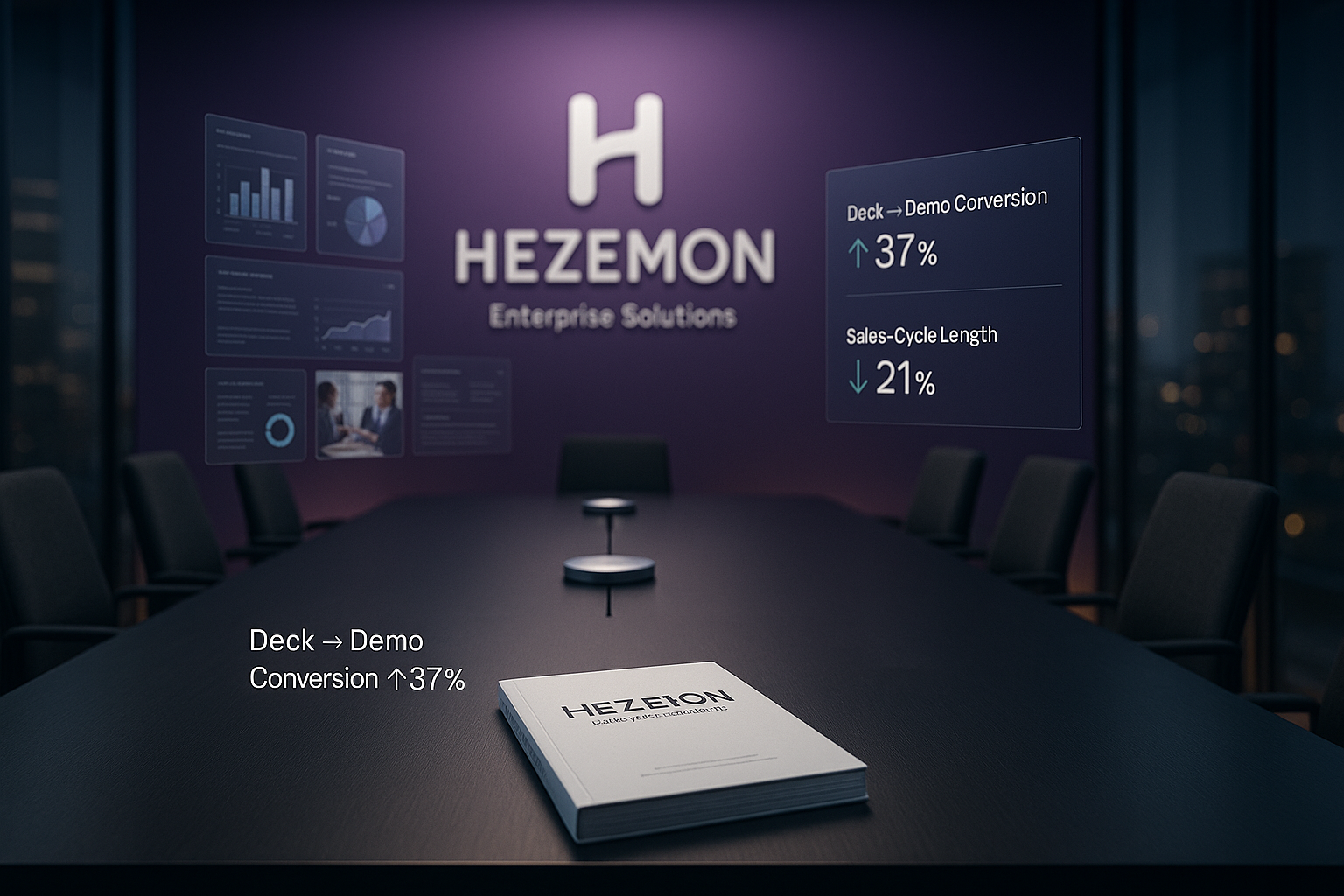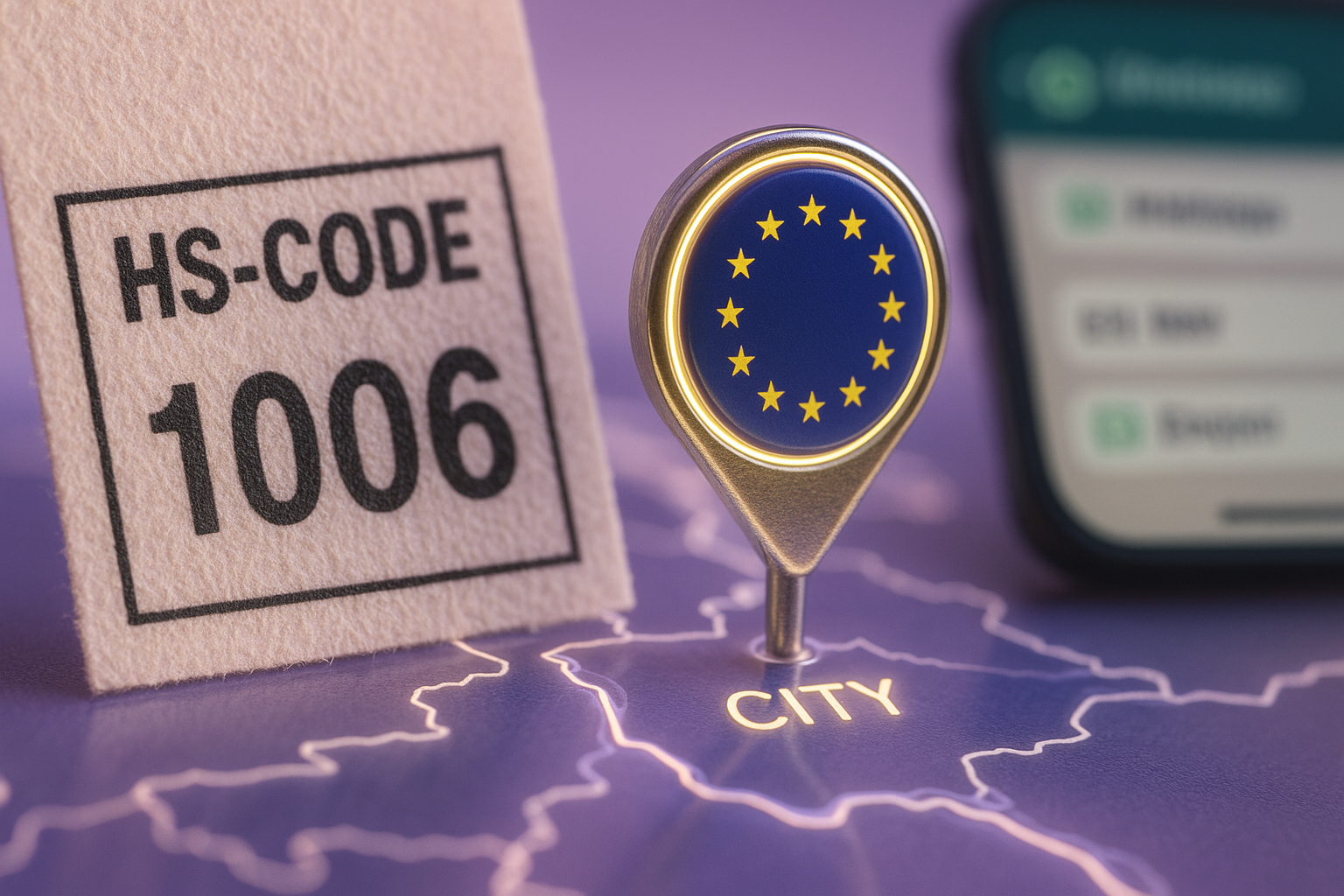In enterprise sales, your brand isn’t what the ad says—it’s what the buying committee experiences in the room. Slides, story, proof, and visuals become the operating system of trust. When your “meeting-room identity” is strong, two KPIs move fast: deck-to-demo conversion rises and sales-cycle length falls. Ads can create air cover; decks close the distance.
Why decks beat ads in enterprise motions
Enterprise buyers don’t purchase because of a catchy headline. They buy when risk feels managed, value looks provable, and next steps are concrete. That moment happens in a conference room, a Zoom, or a board review—and it’s mediated by your deck. Treat your deck not as a one-off file but as a B2B buying committee presentation framework that maps each stakeholder’s fears to specific proof.

The Meeting-Room Identity framework
-
Narrative spine
Open with a one-page TL;DR: problem → stakes → desired future → how you deliver → proof → plan. Then let the deck branch into stakeholder-specific annexures.
-
Persona-layered proof
- CFO: one slide on ROI math, payback, TCO.
- CTO/CIO: reference architecture, integration sequence, SLAs.
- Procurement/Legal/Security: compliance, data handling, DPAs, infosec controls.
This is where enterprise sales deck templates help: a consistent set for each persona ensures coverage and accelerates customization.
-
Visual language
Choose typography, spacing, and iconography that read clearly on a projector and a laptop. Favor contrast, generous margins, and repeatable layouts. Keep charts simple: one idea per chart, labeled directly.
-
Data-viz rules
Convert wall-of-text slides into visual comparisons—before/after, swimlanes, and KPI ladders. Define defaults: chart types, axes labels, annotation style. These sales enablement deck design best practices reduce cognitive load for the committee.
-
Slide metabolism
An executive reads a deck at ~3–5 seconds per slide in a skim. Title every slide with a conclusion, not a category (“Security posture reduces audit prep by 60%,” not “Security Features”).
-
Modularity & reuse
Break the deck into blocks: Vision, Product, Architecture, Proof, Pricing, Plan, Annexures. Give each block a unique code so sales can assemble a deck in minutes without breaking brand.
Build the system in four sprints
Sprint 1: Story mining
Transcribe top sales calls and founder demos. Extract native phrases customers use to describe pain and value. Turn them into your narrative spine.
Sprint 2: Proof architecture
List every claim and map a piece of evidence (case study, metric, certification, demo GIF). Prioritize proof that resolves CFO, CTO, and Procurement objections fast.
Sprint 3: Design system
Create a library in Figma or PowerPoint: cover variants, section dividers, agenda styles, 12–15 core slide patterns, and a compact icon set. This is your enterprise sales deck templates library—lock styles to prevent drift.
Sprint 4: Enablement & governance
Ship a playbook with examples, do/don’t patterns, and a naming/versioning convention. Owners: Marketing (brand), Sales Ops (distribution), RevOps (metrics), Security/Legal (annexures). Train AEs on when to switch from vision mode to proof mode.
Run the meeting like a product demo
- Open with the TL;DR. Confirm the problem and outcomes in the first 90 seconds.
- Branch by signal. If the CFO leans in, jump to ROI; if the CTO asks about scale, pivot to architecture.
- Proof in context. Show one case study that mirrors their industry/stack.
- Decide the next slide. End with a “Plan” slide that proposes an evaluation timeline, stakeholders, and artifacts.
What to measure (and improve weekly)
- Deck-to-demo conversion: % of first meetings that result in a scheduled demo or deeper technical call. Annotate which slide triggered the pivot.
- Sales-cycle length: Track cycle time by deck variant; remove slides that correlate with delays.
- Committee coverage: Count how many stakeholders meaningfully engaged (questions asked, follow-up requested).
- Slide-level heat: Use read-receipts on PDFs to see time per page; compress or expand accordingly.
- Reuse index: % of slides coming from the canonical library vs. ad-hoc. Higher reuse = stronger brand coherence.
Common failure modes (and fixes)
- Feature floods. Fix: return to the narrative spine; one slide = one conclusion.
- Pretty but unreadable.Fix: projector-proof your palette; increase contrast and font size.
- No persona annexures. Fix: build CFO/CTO/Procurement packs; keep them up-to-date alongside your SOC, ISO, GDPR docs.
- Version chaos.Fix: a single source of truth with locked masters and a change log.
Mini case vignette (pattern you can replicate)
A mid-market SaaS team rebuilt its deck into modular blocks with CFO/CTO annexures. Within two quarters, deck-to-demo conversion climbed because reps could pivot to the right proof in under two minutes. Sales-cycle length shrank as Procurement got complete answers from standardized compliance slides. The brand look and feel went from “inconsistent slides” to a confident, repeatable meeting-room identity.
Your next move
Turn your deck into a product: documented, versioned, and measurable. Start with the TL;DR slide, assemble enterprise sales deck templates for each persona, enforce sales enablement deck design best practices, and organize everything into a B2B buying committee presentation framework that your whole revenue team can run. Build the brand where decisions are made—in the meeting room—and watch conversions rise while cycle time falls.





